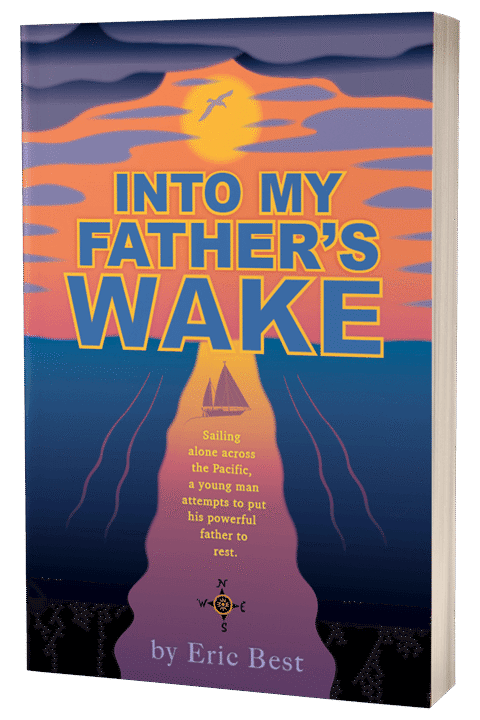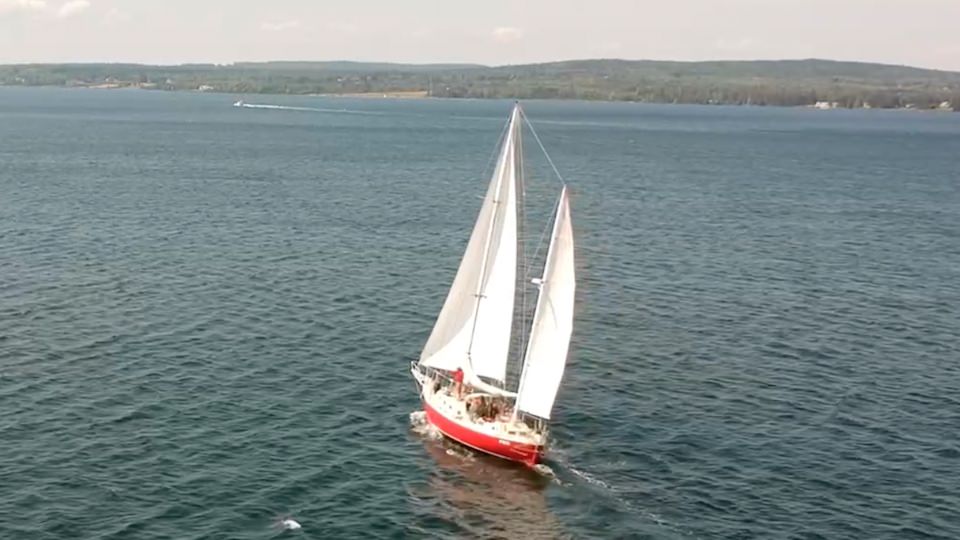Into My Father's Wake
Sailing alone across the Pacific, a young man attempts to put his powerful father to rest.
Prologue
In the years before I finally went sailing alone I struggled with something nameless whose manifestation in my life I did not recognize for the longest time. Most of it was negative — a dull ache of some internal sort, sudden rage at conditions that would not submit to me, relationships that foundered in conflict or the effects of drinking, or drinking itself. This I had learned at home from a couple of experts and the traditions in which they came of age, where alcohol was just something one did at the end of the day. The drinking dulled but did not eliminate the background noise of the thing, which was perhaps the background noise of sadness, or echoes of irreconcilable conflicts, or the thing itself, whatever it might be. In matters of the heart, over time, I found I could only go so far and no farther, derailed or obstructed by something that must have been rooted in me early, if it was not my own by nature.
How much of this had to do with me alone and how much was a function of my family or the way I understood my place in it, or my father and mother, or the New England upbringing of my youth, I could not tell. It is easy enough to blame one’s troubles on others, particularly the people who brought us into the world and raised us. But surely I figured in it somewhere. Who expected to be fully happy, anyway? Perhaps it was all in the pursuit, as books on the topic seemed to say. For a long time I did not appreciate that most people were not raised as I was, and therefore had their own experiences of parental love and the frailties and failures that went with it. Some of those were devious and for me would be intractable to understanding without the help of others.
Meet FEO
Feo was constructed of steel by Meta Shipyards in Tarare, France in 1969, a sistership to the famous “Joshua” that Jean Knocker designed for (and with) Bernard Moitessier, who sailed in the first single-handed “Golden Globe” round-the-world race in 1968.
-
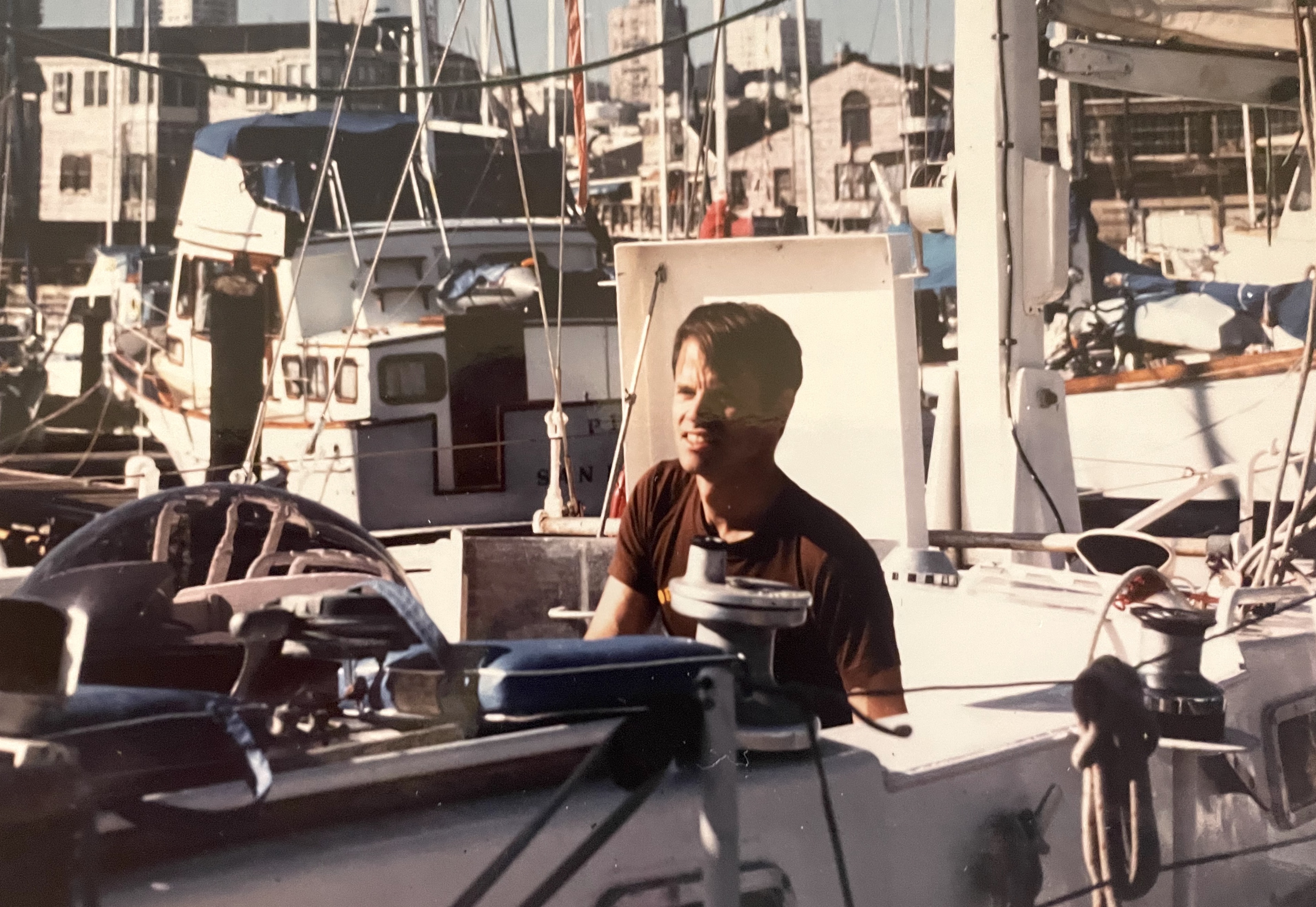
Aboard Feo. Feo was purchased in San Francisco for $75,000 (too much, some will say). This photo of Eric aboard in the early days at Pier 39 shows the plexiglass dome still that was a feature of Feo’s original design for Bernard Moitessier. The cockpit wheel is attached through the bulkhead to a wheel inside the main salon, so she could be steered from inside, which turns out to be difficult and impractical but preferable under some rough-weather conditions. -
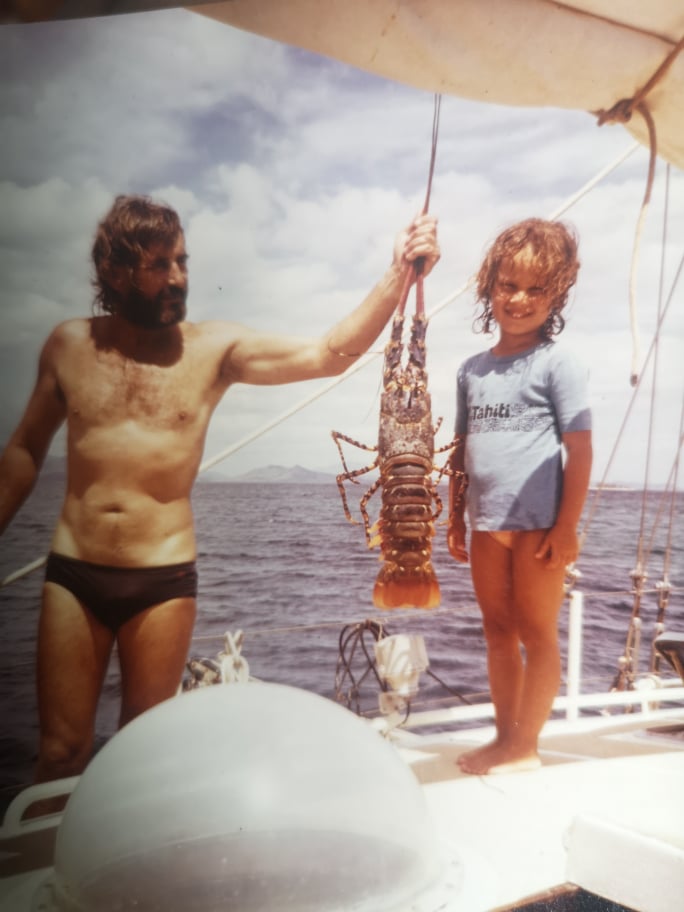
Michel Riboni, Feo’s prior owner, shown here with daughter Moema, 5, admiring the catch that might have been in the Caribbean or the South Seas (unknown). Moema was born on the boat in Costa Rica and lived aboard for her first 9 years, when she arrived in San Francisco and her father sold Feo to her current owner. -
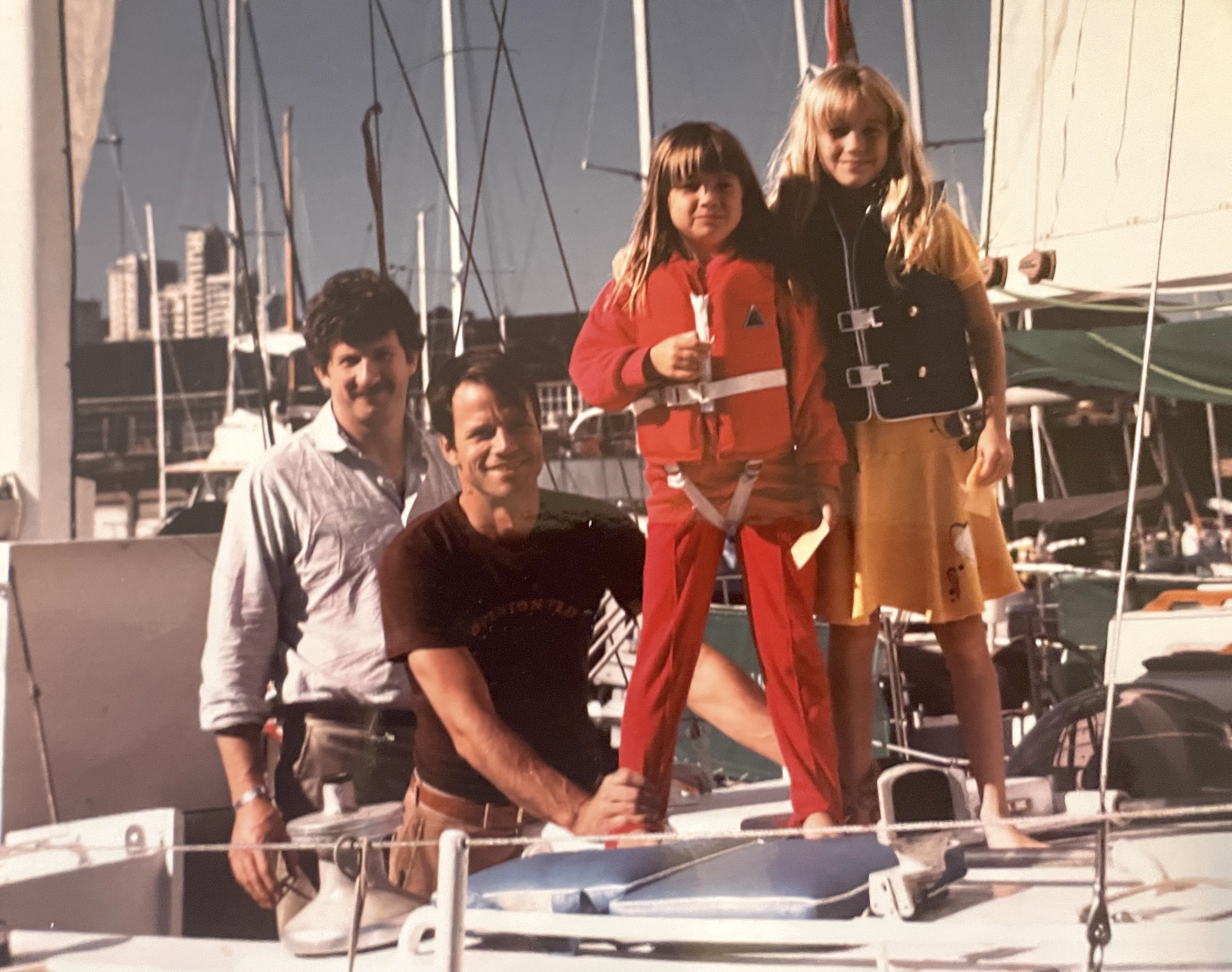
With boyhood friend Jeff Cook taking Feo for a spin in SF Bay soon after purchase in autumn of 1985. Daughter Emily in red and her friend Erin Ganahl in blue. -
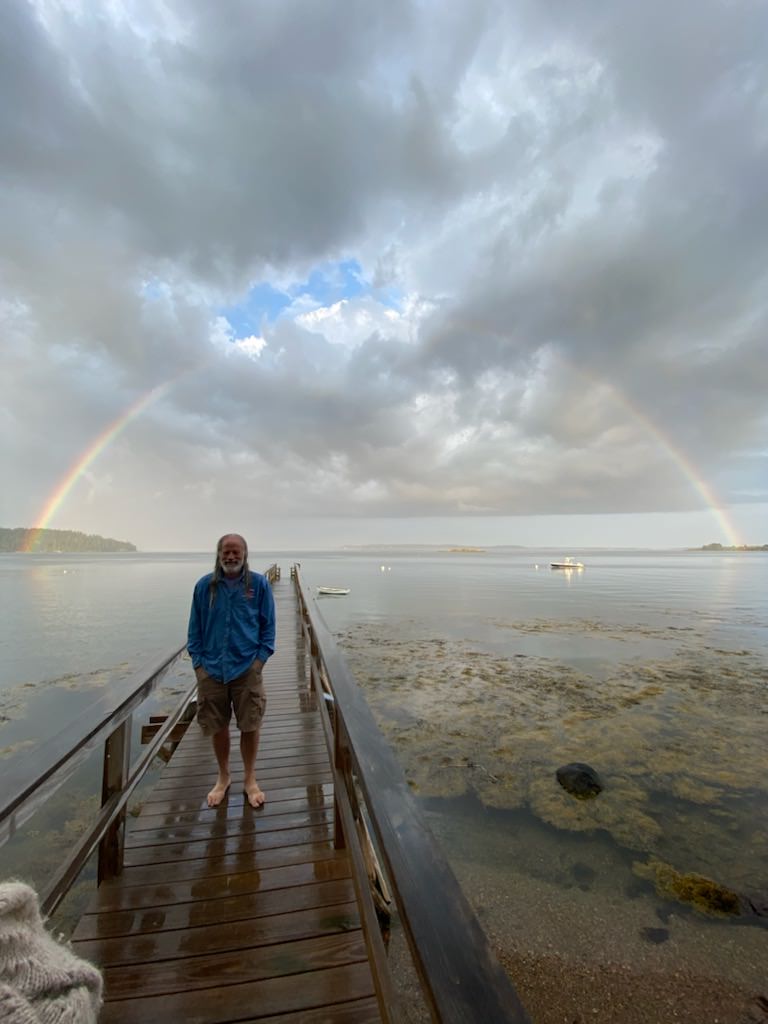
On the runway under the rainbow – Owner/Author Eric Best after a summer rainstorm in Cape Rosier, Maine, on Penobscot Bay, August, 2020. -
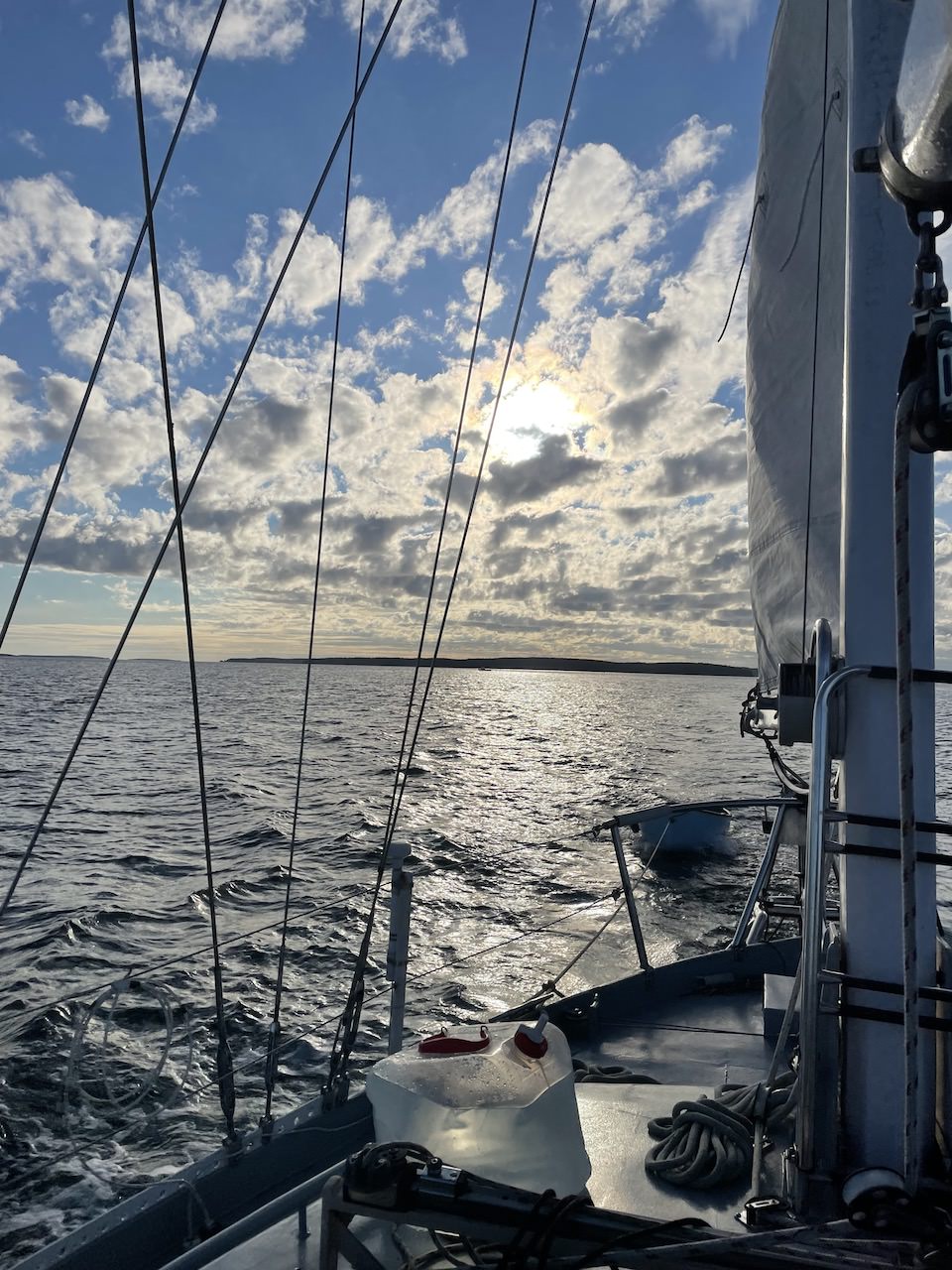
Water container and mottled sky – making headway under power coming west into Eggemoggin Reach, September, 2021. -
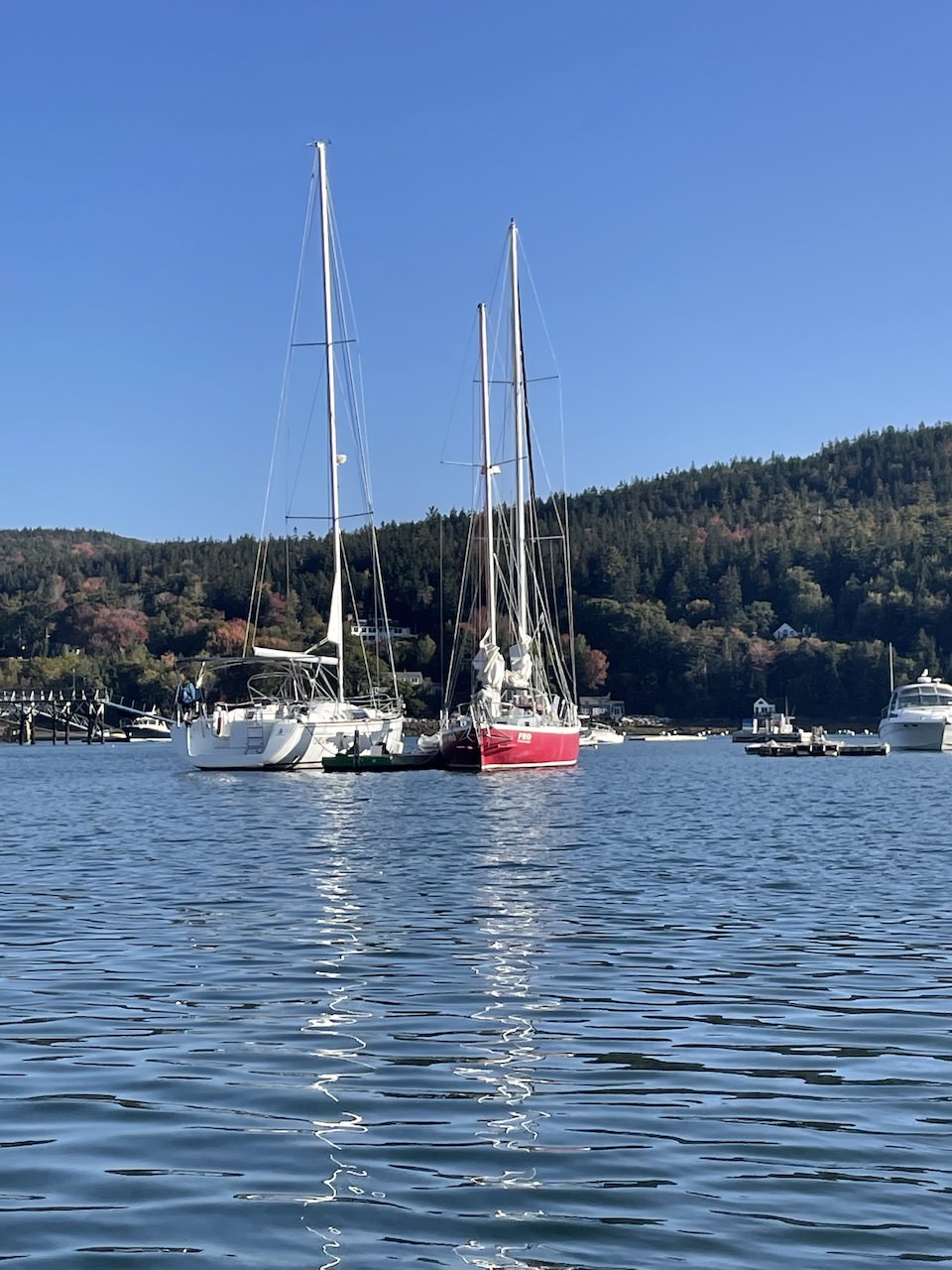
Feo at the floating dock in Northeast Harbor, Mount Desert Island, Maine, in October 2021.
Engaging with Me
My facilitation
Explore Scenario Thinking
Learn More About Who I am
In 1990, I had finished “Into My Father’s Wake,” or so I thought, and having run my savings down to $900, found my way to Global Business Network, where I was hired into the fledgling consultancy started by some alumni of Royal Dutch Shell. In the next five years I had learned the GBN scenario approach to help people think constructively about the future so they might act with more insight and confidence in the present. In 1996, Morgan Stanley hired me into the firm to help its various businesses, divisions and clients think about the future, which forced me to think deeply about the Internet and its impacts and would take me to Europe and Asia and many other parts of the world over the next 10 years. In 2006 I decided (or more accurately was compelled) to go out onto my own, where I have been happily practicing this way of thinking for clients large and small (most recently for Dubai and Fujitsu and The Conversation, and others…) If you listen to the video here, you will get more idea about what this is, how to do it, and who may benefit from the process. The answer is, just about anyone, or groups with a responsibility to anticipate the future(s) and chart strategy against it/them.
Feo was constructed of steel by Meta Shipyards in Tarare, France in 1969, a sistership to the famous “Joshua” that Jean Knocker designed for (and with) Bernard Moitessier, who sailed in the first single-handed “Golden Globe” round-the-world race in 1968. Feo is 47-feet overall in length (39-feet 11-inches stem-to-stern on the deck), with a draft (depth below the waterline) of 5.5 feet and a beam (width) of 12.5 feet. Ketch-rigged (with a second, smaller mast located ahead of the tiller), Feo weighs 13 gross tons and with a full keel is known for relative stability in heavy weather, or “sea-kindliness.” Her hull and deck are steel, mast and booms are wood. She is designed for single-handed sailing, with a small, self-bailing cockpit and lines that lead into the helmsman’s area. With a full galley and refrigeration, one head (toilet) and shower, she sleeps two aft, two forward and two amidships. She is powered by a single inboard diesel engine.
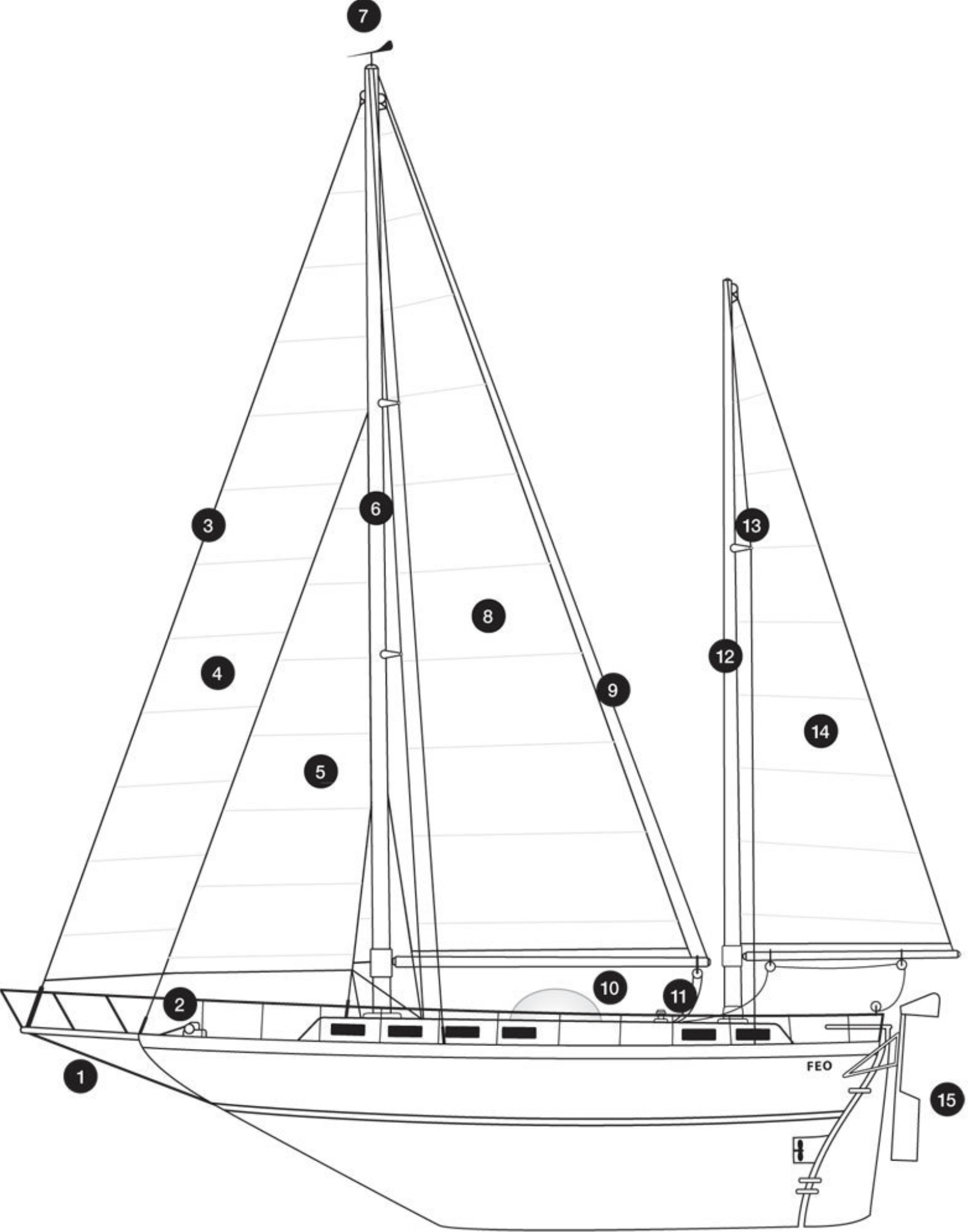
- Bobstay
- Windlass
- Forestay
- Jib
- Staysail
- Main-mast
- Telltale
- Mainsail
- Topping Lift
- Cockpit area
- Winch
- Mizzen-mast
- Cross-tree/spreader
- Jigger
- Windvane
